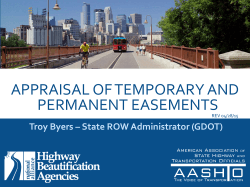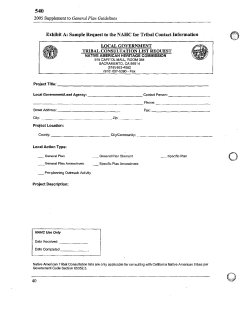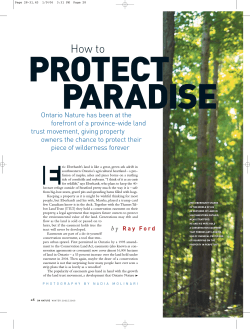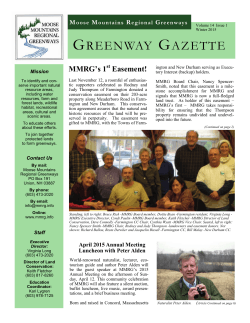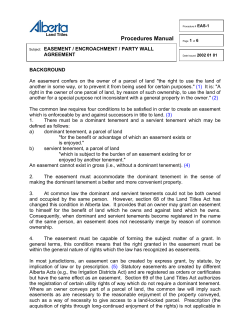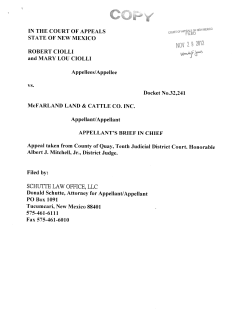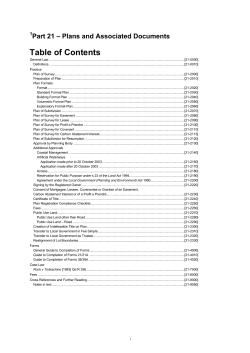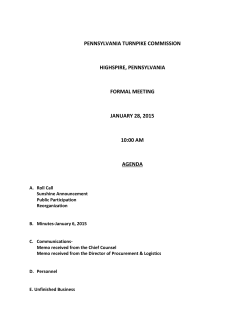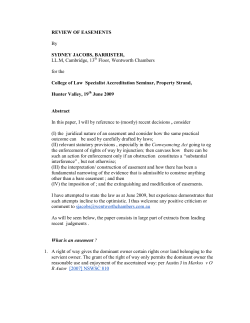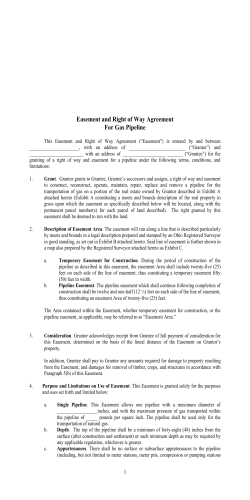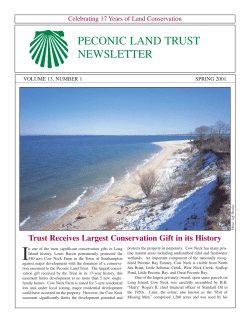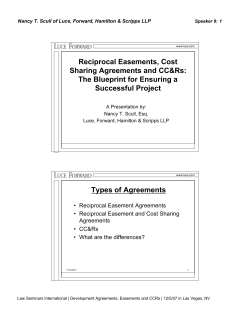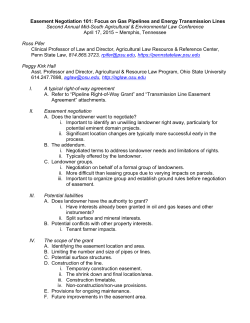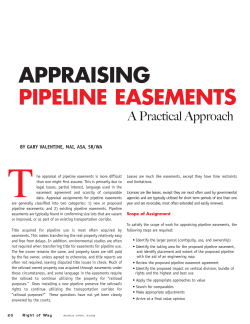
WANT TO RIGHT-OF-WAY KNOW MORE? TRIMMING
RIGHT-OF-WAY TRIMMING WANT TO KNOW MORE? Trees are part of what makes this area so attractive, but trees often cause problems with a utility’s lines, whether overhead or underground. The majority of CHELCO’s more than 3,800 miles of line are overhead, making right of way clearing very important. RIGHT OF WAY AGENT Kathy Epperson, R/W-NAC 850.892.5069 Ext: 325 kepperson@chelco.com Cutting rights of way is critical in order to provide as wide a buffer as possible on either side of poles and lines. A large buffer protects the lines during bad weather and high winds. It also allows easier access when repairs become necessary. Clearing trees and limbs away from lines also minimizes blinking lights brought on by limbs touching power lines. Following Hurricane Ivan in 2004, eight miles of line in the Blackwater State Forest near Holt were buried by fallen trees. Clearing the debris off lines added significantly to the restoration time. UNDERSTANDING EASEMENTS & RIGHTS-OF-WAY CHELCO cuts ground to sky 10 feet on either side of primary line (20-foot total). The Florida Public Service Commission mandates that utilities harden their systems by cutting and trimming to keep trees and limbs from causing damage. CHELCO 1350 West Baldwin Ave. P.O. Box 512 Defuniak Springs, FL 32435 850.892.2111 Toll: 800.342.0990 www.chelco.com EASEMENT VS. RIGHT-OF-WAY HOW LONG DOES THE EASEMENT LAST? WHAT ACTIVITIES ARE ALLOWED WITHIN THE EASEMENT? Terms of the easement are written in the easement Land within the right-of-way may be used for The terms “easement” and “right-of-way” are often used interchangeably when people talk about building new power lines. The terms are distinctly different, as this brochure explains. agreement. Most electric utility easements any purpose that does not interfere with the are perpetual and not subject to termination construction, operation or maintenance of the or expiration. Once an easement is signed, power line. In agricultural areas, land may be it becomes part of the property record. The used for crop and pasture. Otherwise, streets, WHAT IS AN EASEMENT? landowner who signs the easement and all future lawn extensions, underground utilities, curb and An easement is a permanent right authorizing a owners, are bound by the agreement terms. If the gutters, etc., may cross the right-of-way with prior person or party to use land or property owned utility removes the line, and abandons the right-of- written permission from the utility. by another for a particular purpose. Landowners way, it can release the easement rights. can continue to use the land for most purposes, must be signed by the landowner before the utility ARE LANDOWNERS PAID FOR AN EASEMENT? WHAT ARE THE BUILDING AND PLANTING RESTRICTIONS WITHIN THE EASEMENT? can proceed with the construction of a power line. CHELCO is a member-owned, not-for-profit electric Conditions vary, but the primary building and cooperative and does not pay for easements. planting restrictions in the right-of-way are in although some restrictions are included in the agreement. An easement is a legal document that place to keep necessary clearance for operation WHAT IS A RIGHT-OF-WAY? A right of way is the physical land upon which the facilities (power line, roadway, etc.) are located. and maintenance and to comply with the National WHAT EASEMENT RIGHTS WILL BE NEEDED FOR THE POWER LINE? Electric Safety Code. Restrictions prohibit CHELCO will require easements that allow for planting of tall-growing trees. FACT: When a Right-of-Way Easement is construction, operation and maintenance of a placed on the property line, it then falls within power line acorss a defined right-of-way located on the local building setback requirement, and is the landowner’s property. These easements include not an addition to the setback requirement. the right to clear, trim and remove vegetation and trees from within the right-of-way. FACT: The Right-of-Way Easement is not a deed. The landowner continues to own the land where the right-of-way is located. construction of buildings and structures, and the These corridors must be carefully maintained to provide safe and reliable electricity. - NATIONAL GRID 2001
© Copyright 2025


